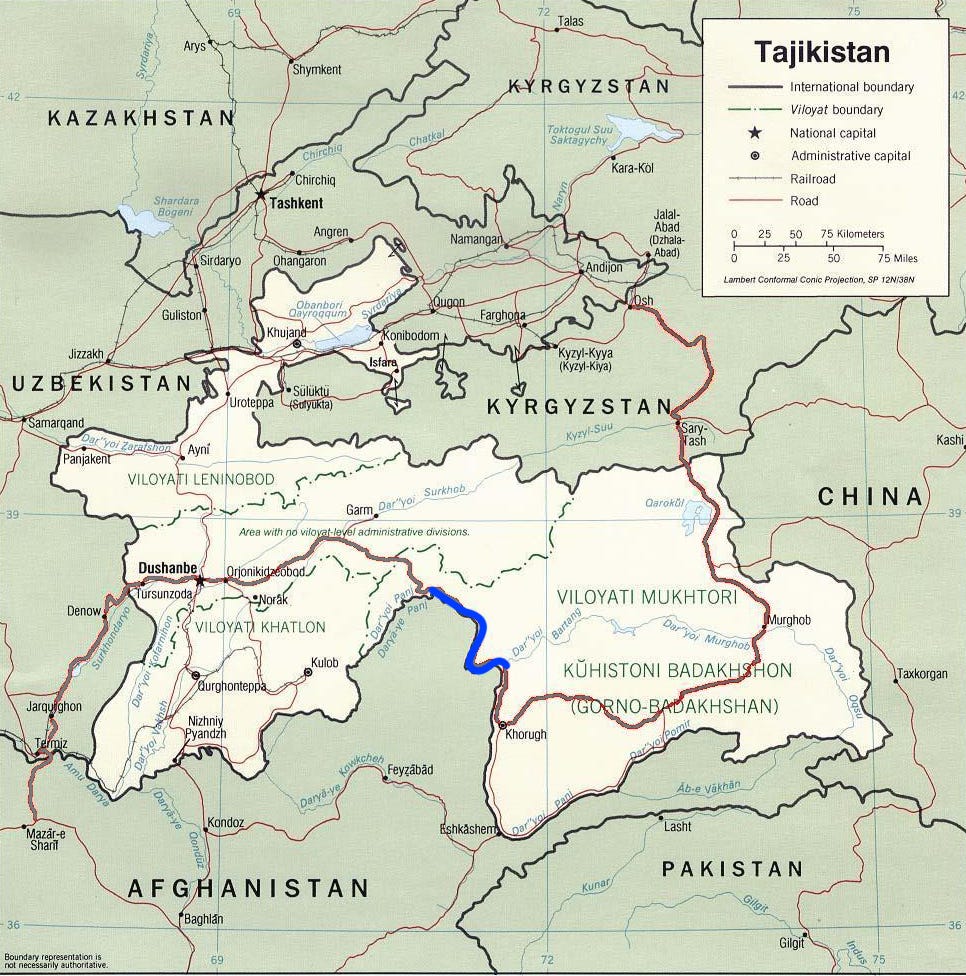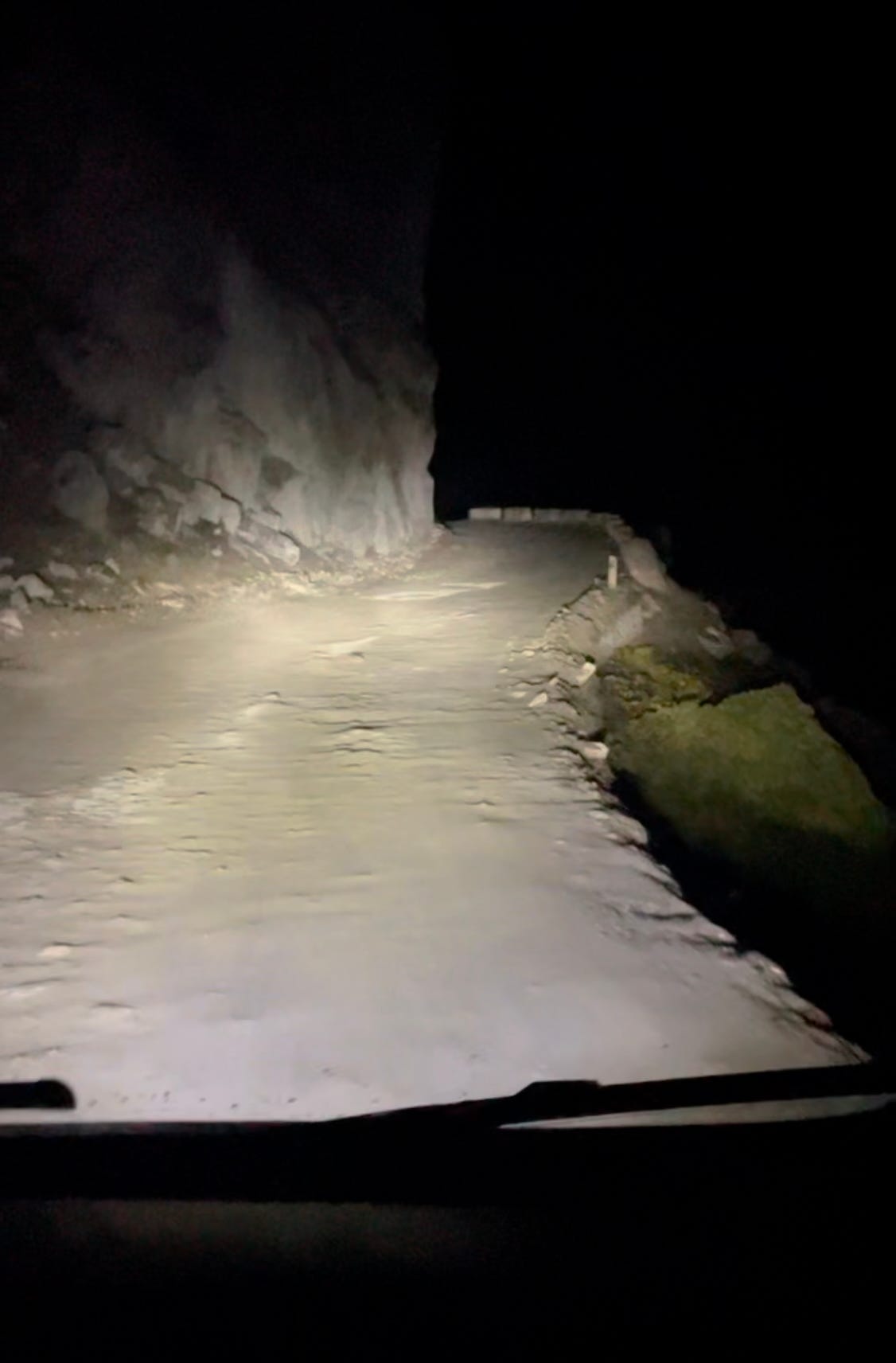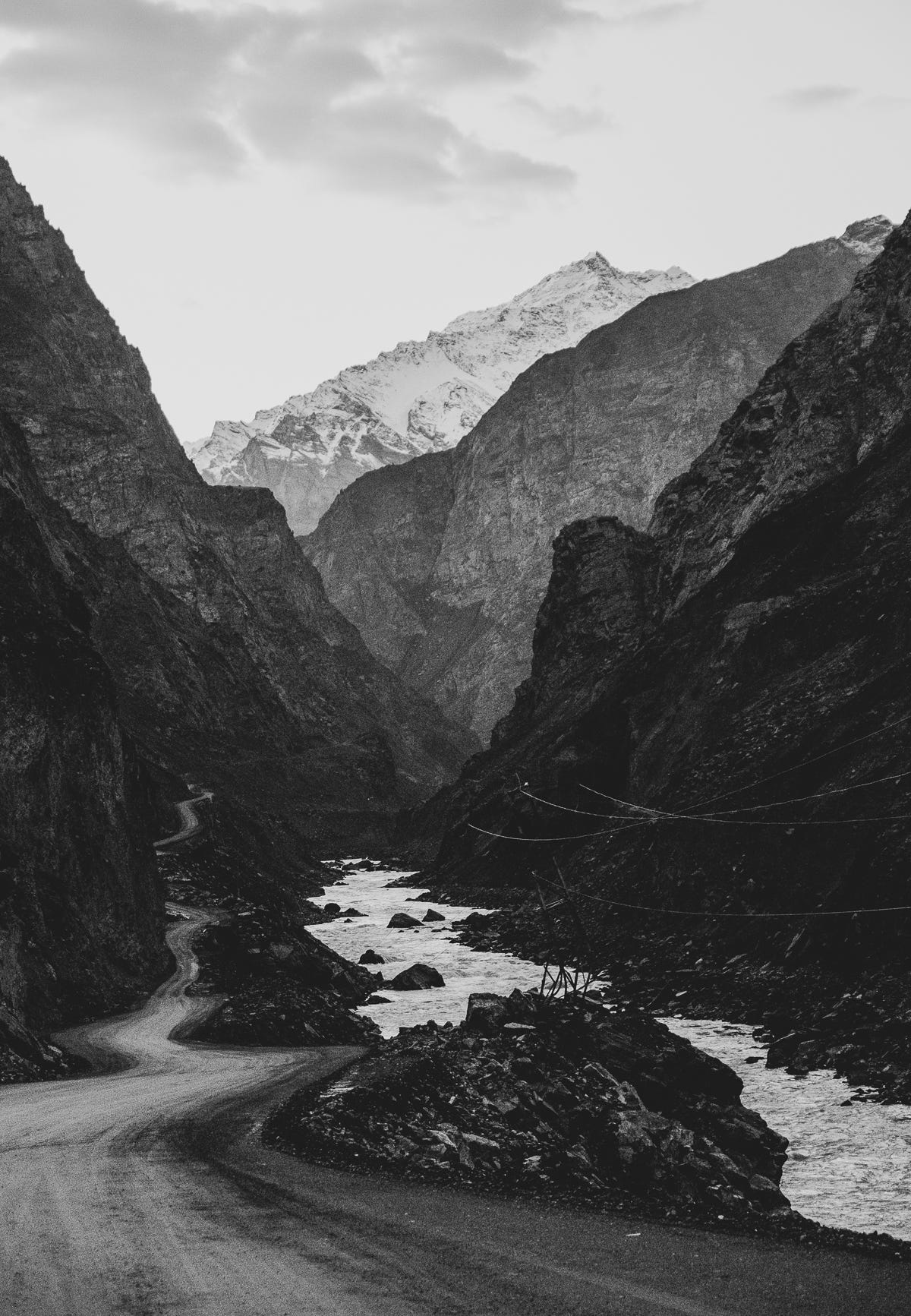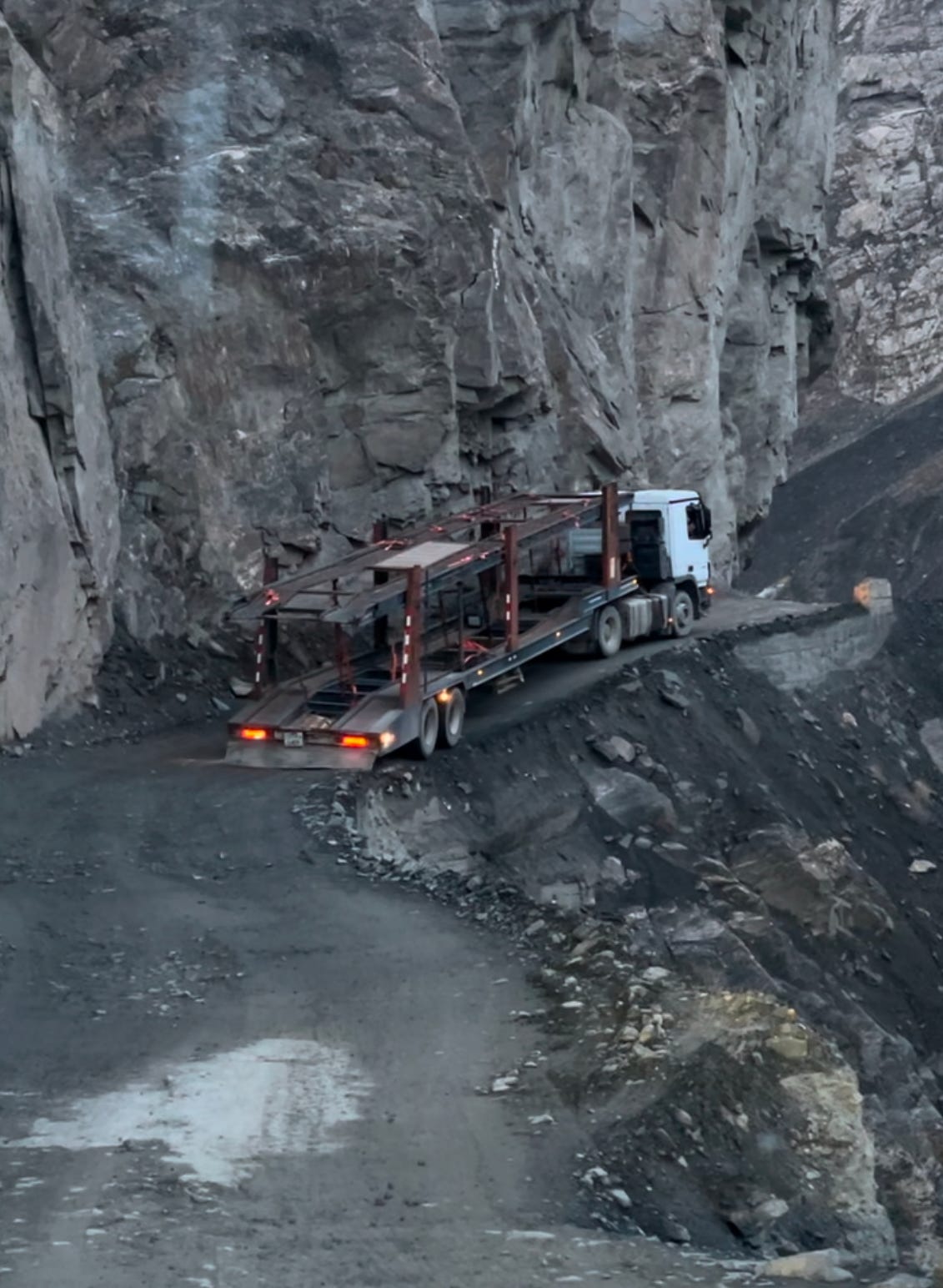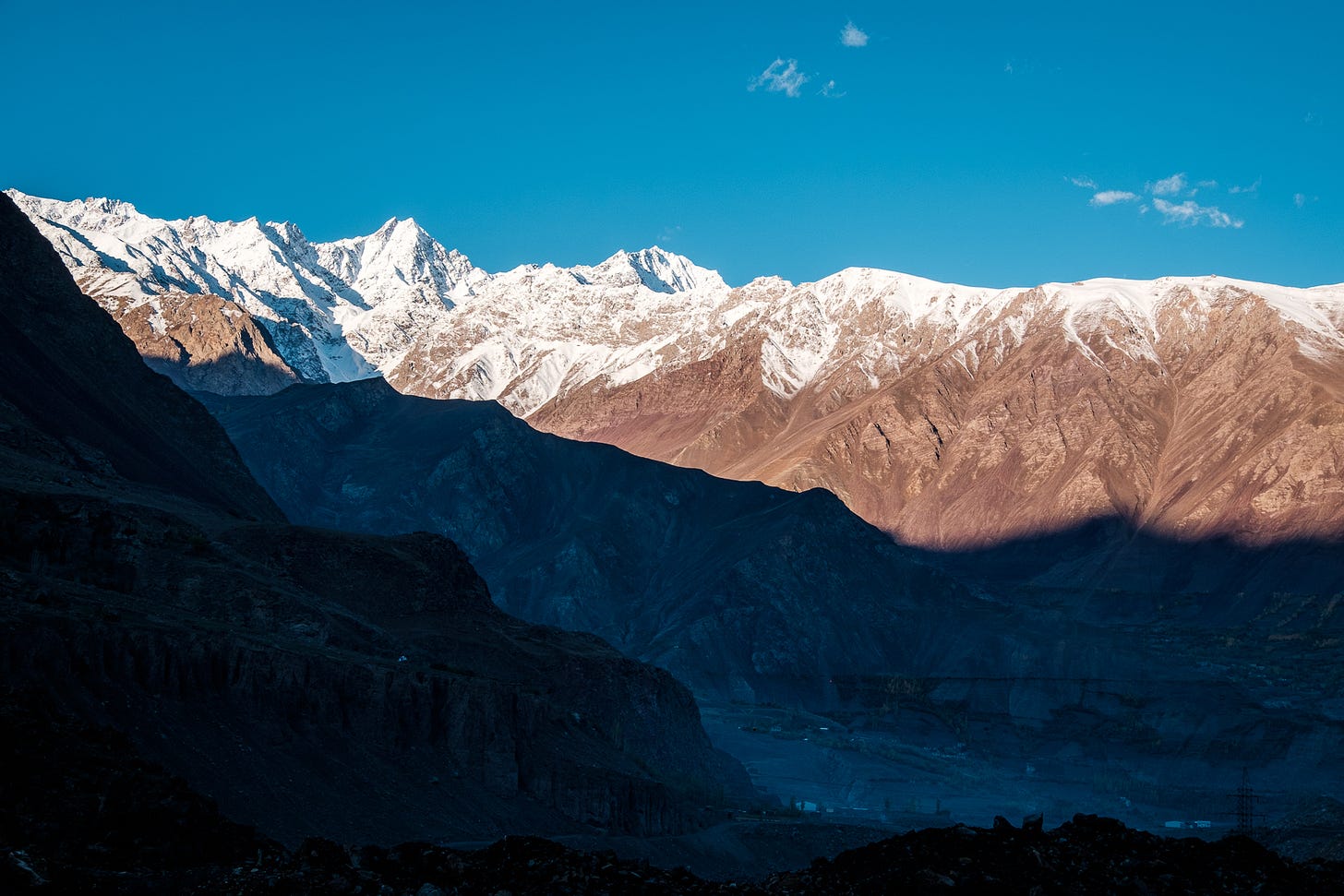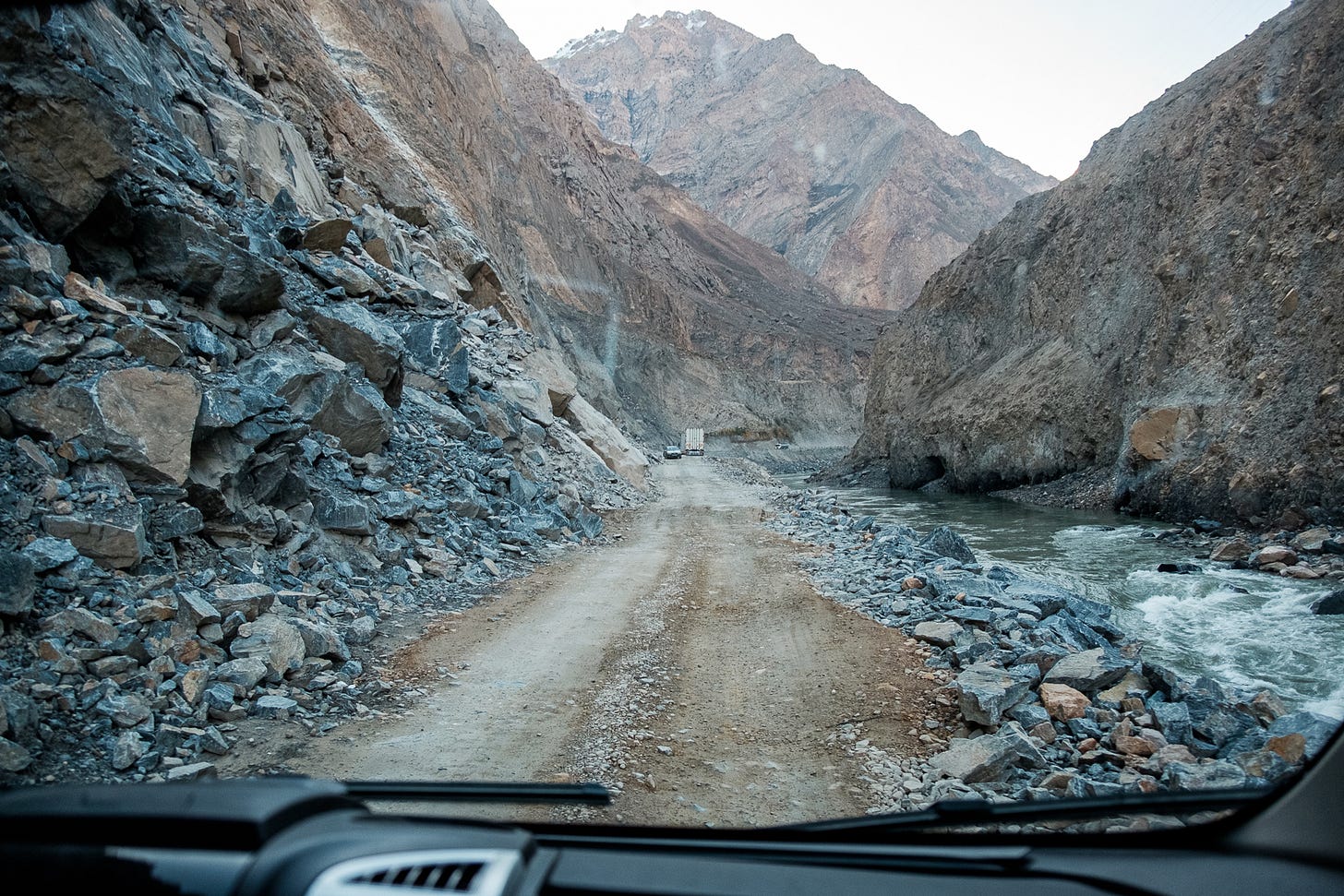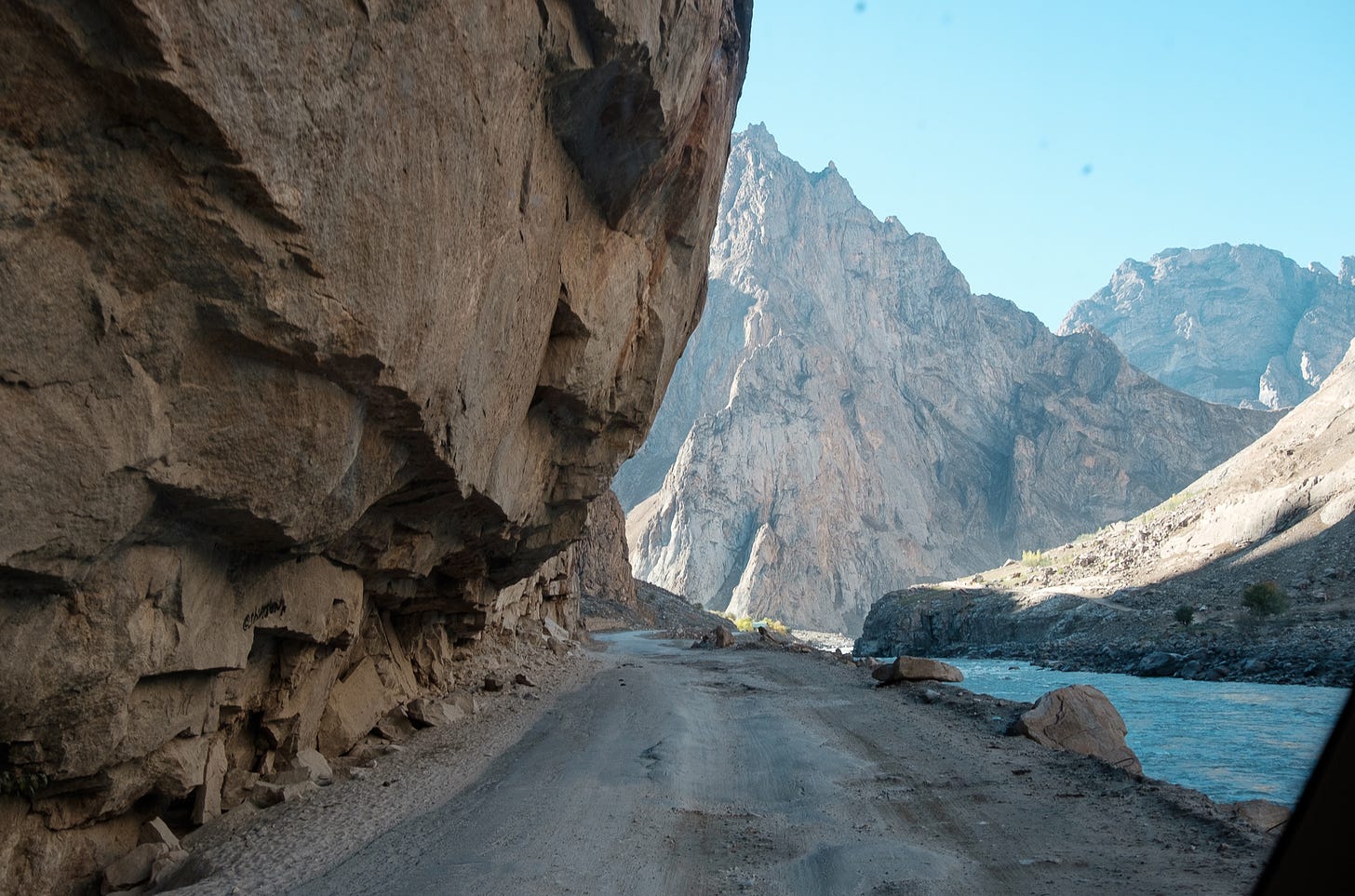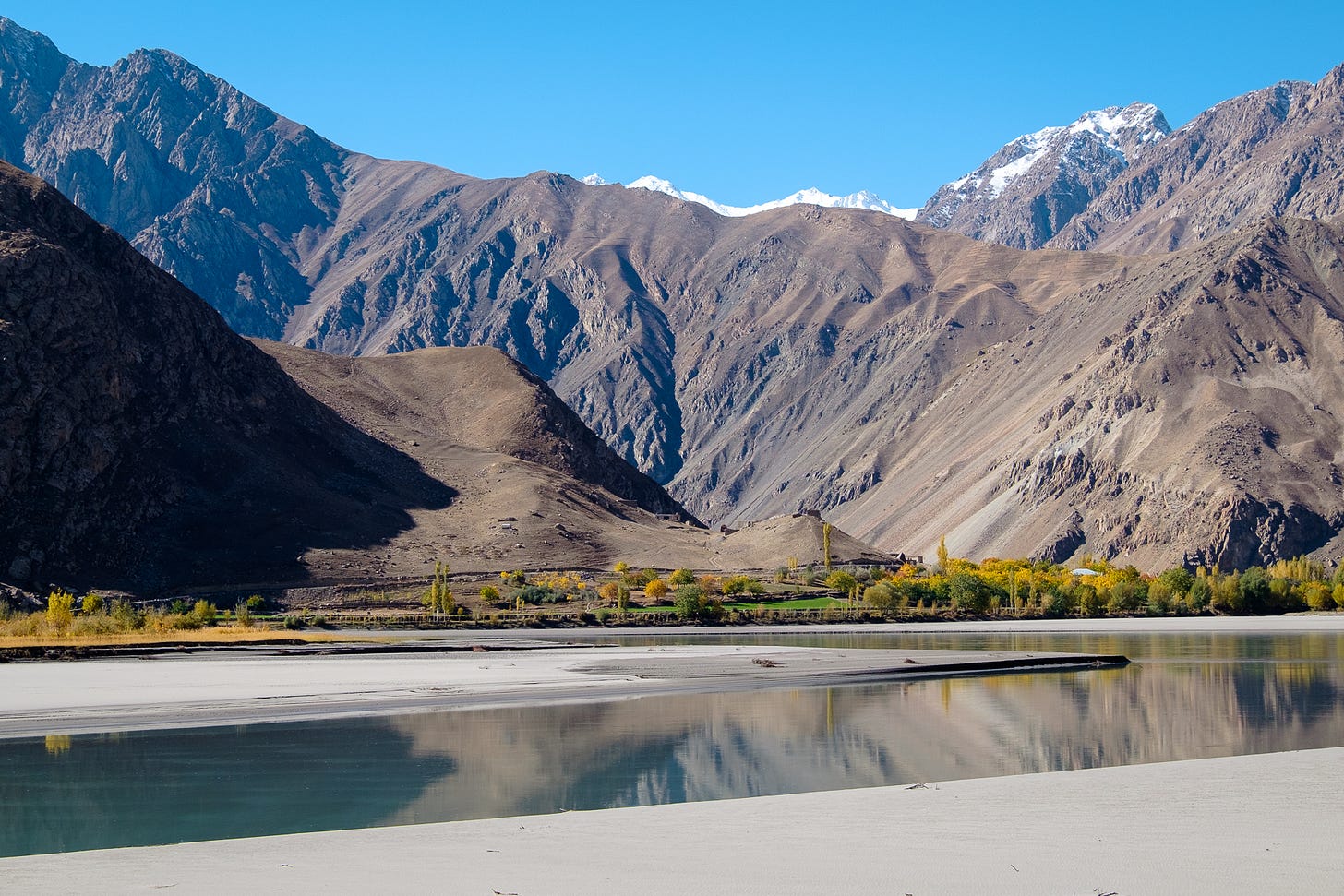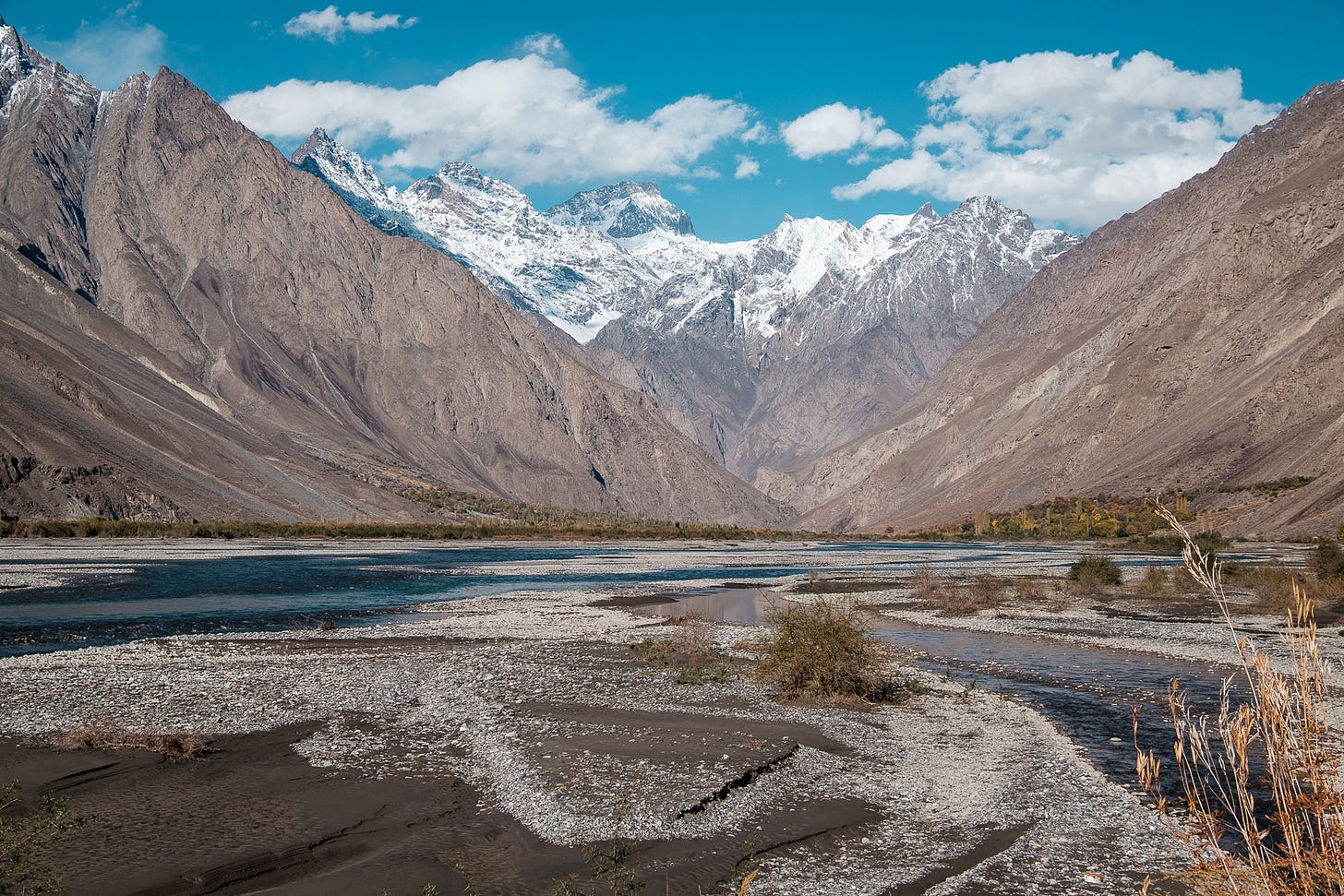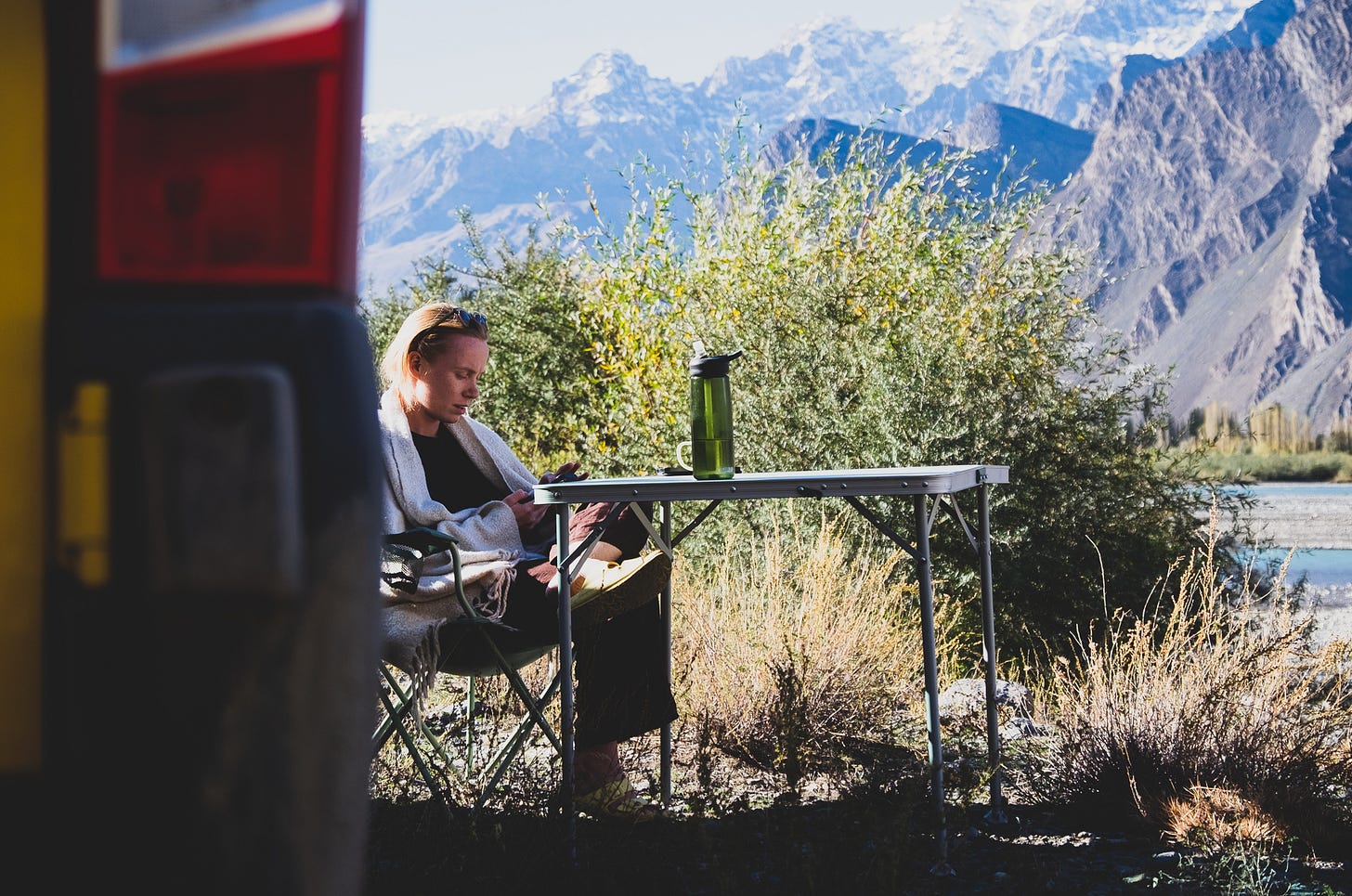Our second day on the Pamir started early, at 04.15 precisely; and at 04.30, we were on the move. We knew that there were road construction works happening from Qalai-Khum onwards. Over exactly how many kilometers, it wasn’t clear. All we knew was they supposedly started working at 6.30 and that cars would be stopped for extended periods of 4 to 6 hours, during which workers would use explosives to widen the road. This section was approximately 100km long, and made of broken asphalt and dirt. Our goal was to clear as many construction sites as possible before they started operating – failing to do so would create an endless driving day and make us lose the good weather window we were targeting for our journey.
Driving in the dark through the empty construction sites, we spotted excavators and other vehicles with Chinese branding. Earlier throughout our trip, we had come to understand that China is doing works for an enormous part of the Balkans, the Caucasus and Central Asia. In Serbia and Georgia, we witnessed them building massive highways connecting the country in its width. It continued here, on the Pamir. We were confused of course, who would spend time and money to build a road so remote and connecting only a handful of villages? It took us half an hour to understand: suddenly we crossed the first 15-meter truck of many we would see that day. They were each carrying 8 new Chinese-made electric cars or copies of Range Rovers, Porsche and Audi. We also remembered that all taxis and a good half of all private cars in Dushanbe were electric Chinese cars. The transition from driving through rural Tajikistan where life revolves around agriculture – the annual household income is 865 USD – to reaching sparkling Dushanbe isn’t something one would easily forget. The capital is home to brand new, tall buildings decorated with enormous screens displaying videos of the president – talk about some personality cult. The Disney-like parliament, library and presidential palace, among many others, feel utterly out of place and like a slight misuse of the country’s money. Most of the money for these projects, it seems, came from China. All that to say that the Chinese are smartly reconquering the once-strategic silk-road by repairing it. This operation and the interest behind it can only be fully understood when seeing the trucks on the Pamir Highway: China is flooding Central Asia with its affordable goods and (illegally, for Westeran standards) copied vehicles.
Back to the Pamir and its vertiginous curves. The road was so narrow that some of the wheels of the trucks would be suspended over the edge as they took the turns, under overhanging rocks. Below them, a steep ravine and the roaring Panj river. It was gut-wrenching to experience.
At some point, the traffic coming against us wasn’t only trucks anymore. We started seeing the very same electric cars carried by the trucks, only they were being driven on the road. They didn’t have number plates and looked like the protective plastic hadn’t been removed – they were brand new, if it wasn’t for the dust. When we spotted some sort of depot, gathering dozens of them by the side of the road, we burst out into laughter: these cars were being driven from China into Tajikistan to be sold. Foreigners from all over the world kit and gear up their 4x4 vehicles to attempt to drive this legendary road, hoping they manage without too much damage. These electric cars are being driven over the very same road to reach the store where they are sold – most likely with broken suspensions.
Many practical learnings about the Chinese trade with Central Asia later, we found ourselves out of the construction sites: we hadn’t been stopped once. The sun had come out, and was gently illuminating the snowy summits of the 5000m peaks surrounding it us. The side of the road was lined by yellow poplars. We were now smoothly driving towards Khorog, the capital of the Pamir region. After the sandy and exposed roads through the construction sites, this section of the road felt like a breeze, gently following the shape of the deep river gorge. Along the road, each little patch of green grass that managed to form in the rocky landscape was occupied by a little village. We kept looking towards the other side of the river, with the feeling we could touch Afghanistan with a fingertip. Around 13.30 – meaning 8h of driving – we crossed Rushon, and the breathtaking view over the opening Bartang Valley forced us to a stop. We parked on the Bartang river delta, washed ourselves in the freezing water, and enjoyed the view until the sun disappeared behind the mountain. At 15.00 it was painfully cold. We retreated to the van and our day was over.
We’re publishing this story in parts. Next time: Day 3 - From Rushon to Dasht + Day 4 - From Dasht to Ishkashim





